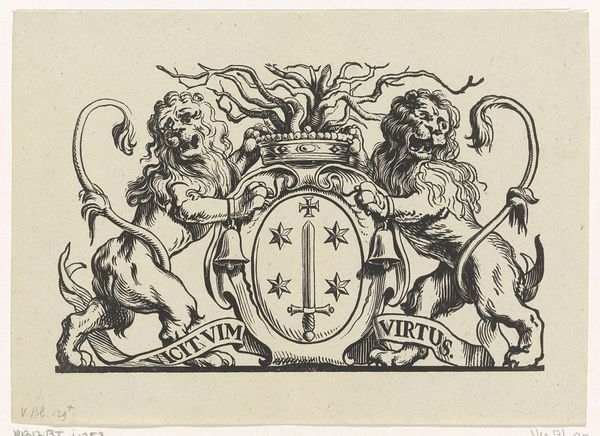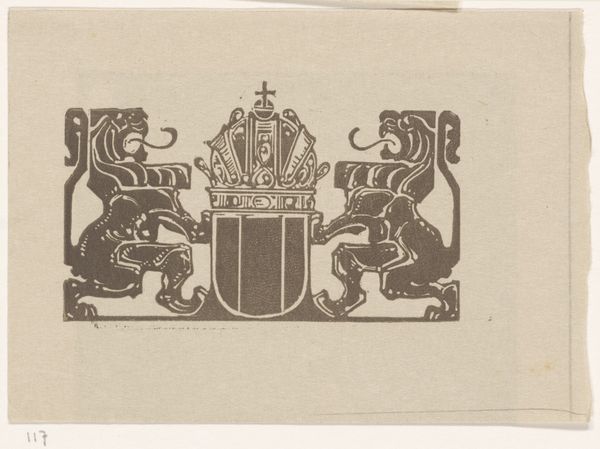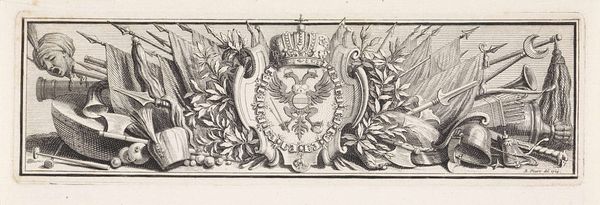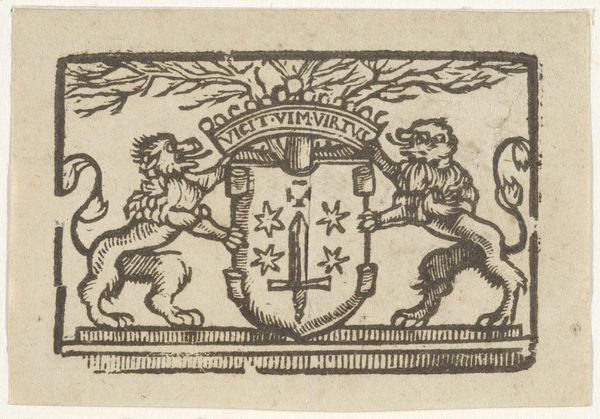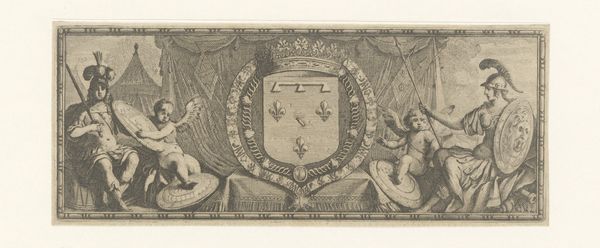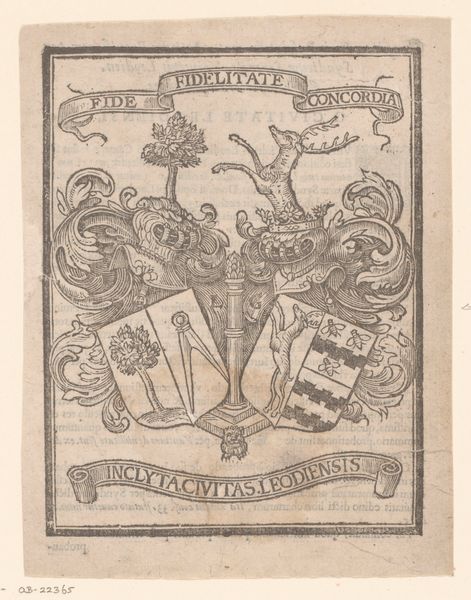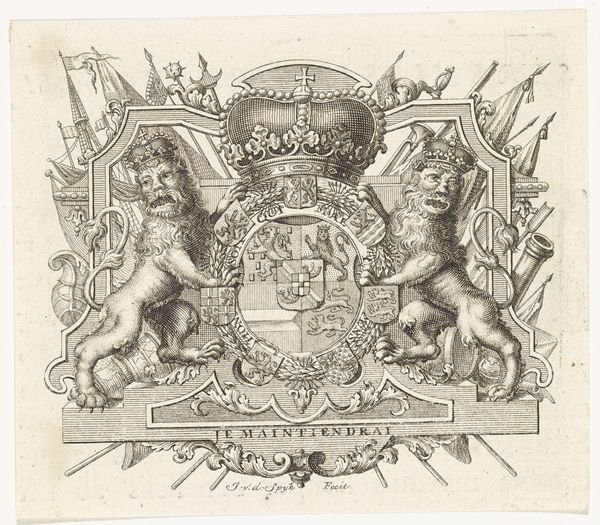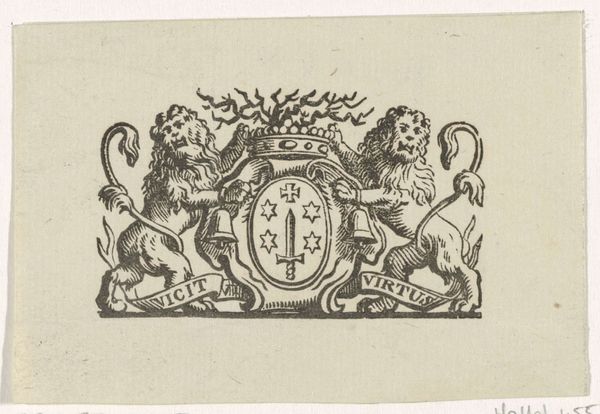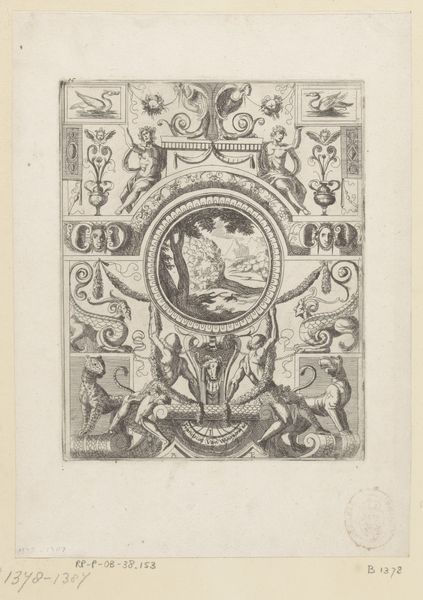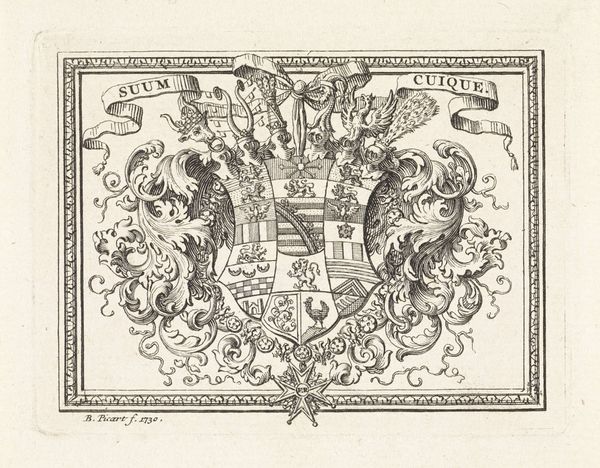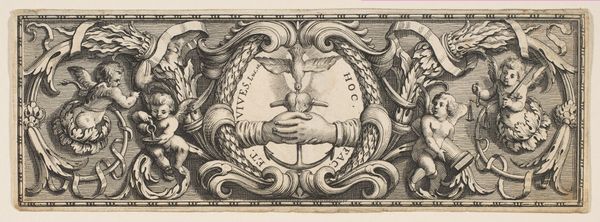
graphic-art, print, engraving
#
graphic-art
#
baroque
#
pen drawing
# print
#
old engraving style
#
geometric
#
line
#
engraving
Dimensions: height 112 mm, width 195 mm
Copyright: Rijks Museum: Open Domain
Editor: This is a vignette featuring the coat of arms of the city of Haarlem, made sometime between 1718 and 1780 by Johannes Enschedé I. It's an engraving, and the style really reminds me of old textbooks. It has these two really imposing lions holding up this crowned shield… It makes me think of power, and of civic pride. What's your take on a piece like this? Curator: The vignette functions as a piece of civic marketing. We see this type of imagery circulating during a period of shifting power dynamics in the Netherlands. Think about it - what image of itself would Haarlem want to project at that time? Editor: Strong? Certainly the lions convey strength. Also established? All that heraldry speaks to a deep history. Curator: Exactly. By the 18th century, Haarlem's "Golden Age" was in the past. Cities used heraldry to maintain or bolster their identity during economic or political transitions. How might Enschedé's choice of medium – engraving, a relatively reproducible and portable art form – speak to this need to disseminate the city’s self-image? Editor: So, because it's an engraving, it can be easily reproduced and shared widely, acting like a logo in a way? To promote a certain image of the city. I never thought of civic pride being something that needs active promotion! Curator: Precisely! And note the text included: "QVTIVM VIRTUS" "Virtue from Quiet." Consider how that slogan tries to position the city in contrast to more active centers of commerce and trade. These images shape perceptions of a city, influencing everything from trade to tourism. Editor: That's a whole different way of thinking about art - not just beauty, but as a tool of city governance, a form of marketing, designed to sway public opinion. Curator: It shows us that art always serves social and political functions. Next time, consider who benefits from how a place is represented!
Comments
No comments
Be the first to comment and join the conversation on the ultimate creative platform.
